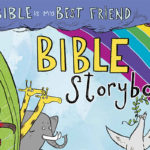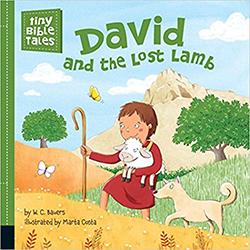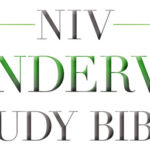WASHINGTON (RNS)— Bob Sanford wanted to create a Bible that would bring order and clarity to the text. Instead, he’s waded right into one of the great debates of biblical scholarship.
The Chronological Study Bible will be released this fall in the midst of a Bible-publishing boom in the United States. In an industry that now has as much to do with profits as with prophets, Sanford expects his new edition to have wide appeal.
|
Bible publishing has come a long way since Johann Gutenberg’s first printing of the Bible. The new Chronological Study Bible reconfigures the order of the Bible into a more sequential time line, but some scholars are skeptical about the value of such a Bible.
|
The challenge “is to take the scholarship and make it enjoyable to a readership that enjoys history,” said Sanford, who oversees the Bible division for the giant Christian publisher Thomas Nelson.
The company has carved out its share of the industry’s estimated $500 million annual haul by cornering the market on niche markets, such as families and teenagers.
The latest edition reconfigures the order of books, psalms, and Gospels in an effort to provide a historical framework for a text many scholars consider chronologically challenged.
So, for example, whole sections of Isaiah and Nehemiah are reordered to better reflect an accurate historical timeline; the Gospels of Matthew, Mark, Luke and John are merged into one based on Mark’s chronology; and some of the Apostle Paul’s letters—which traditionally appear later in the New Testament—are woven into the Book of Acts.
Some biblical scholars, however, aren’t buying the idea.
“I would say, generally speaking, that scholars would have no interest at all,” said Pat Graham, a professor at Emory University in Atlanta. “What it ends up being is something that laypersons find helpful—or would think it would be helpful. Any biblical studies expert worth their salt would not have much interest in this at all, except as kind of a curiosity.”
Graham, who called the idea of a chronological Bible “radical,” offered a helpful suggestion for potential buyers.
Sign up for our weekly edition and get all our headlines in your inbox on Thursdays
“It’s like you would attach a pack of cigarettes with a warning label from the surgeon general,” Graham said. “Well, this Bible should have a warning from the theologian general or something: ‘This Bible may be harmful to your spiritual health.’”
At issue for scholars is a question they have grappled with for generations: When—and by whom—was the Bible written? For readers, the larger question is this: Does it really matter if Ezekiel appears before or after Nehemiah, and does it make a difference if a biblical timeline looks more like a zigzag?
The most recognizable changes in the Chronological Study Bible come in the placement of non-narrative sections—books that aren’t necessarily anchored by specific people, places and events.
For instance, the book of Psalms, which appears in the middle of the Old Testament in most editions, is split up in the new edition by time period.
All psalms relating to King David appear as supplements to the relevant books of the Old Testament, such as 1 Chronicles.
Unlocking and reordering the Bible’s chronology can help readers understand the context in which portions of the book were written, Sanford said. But in practice, scholars say, this can prove challenging.
For some biblical accounts, such as the Israelites’ exile to Babylon, there are nonbiblical historical accounts to support the narrative. Other stories require a leap of faith, however.
Critical scholars say trying to rearrange individual books requires getting to the bottom of questions about authorship. Many biblical works were the handiwork of multiple authors, all writing under a single name, they insist.
“It was very common in antiquity to attribute one’s own writings to the most important historians in the past,” said professor Michael Coogan, a professor at Stonehill College in Easton, Mass., and editor of the New Oxford Annotated Bible.
“It happens not just in the Bible. Socrates certainly didn’t say everything Plato quotes him as saying,” Coogan observed.
The Bible’s order is significant for other reasons as well. Some scholars worry that changing the order would impact the Bible’s meaning and diminish the value of non-narrative elements, such as the book of Psalms.
“Part of the problem, and to me one of the flaws, is the assumption that this Bible is working with—that (narrative) is the primary genre of literature in the Bible. That just isn’t true,” said Bruce Birch, who teaches at Wesley Theological Seminary in Washington, D.C.
All is not lost for the book’s publishers, however. While some in the academic community cry “foul,” the book’s target demographic seems more receptive to the idea. Brad Riley, pastor at First Church of the Nazarene in Wichita, Kan., said a chronological Bible would likely be most useful for newcomers to the faith.
“The Bible can be intimidating for people … and the chronology can help people put the timeline together in their minds,” Riley said.
Tommy Bratton Jr., who leads group Bible study at First Baptist Church in Asheville, N.C., agreed.
“We try to put our Bible studies now in context of when things occur,” Bratton said. “It would give people, I think, a greater sense of how things were laid out in that way.”
Whether or not the book will win any converts in academia, Sanford thinks his new edition will be a success. There have been chronological Bibles before, he notes, but none specifically geared toward Bible study.
If everything works according to plan, the newest product will provide a fresh perspective on an age-old bestseller. And on this, experts begrudgingly agree.
“You’re writing a new biblical narrative,” said Timothy Beal, a professor at Case Western Reserve University in Cleveland. “I guess in this age of (cutting and pasting), it seems like a way to come up with a new Bible.”














We seek to connect God’s story and God’s people around the world. To learn more about God’s story, click here.
Send comments and feedback to Eric Black, our editor. For comments to be published, please specify “letter to the editor.” Maximum length for publication is 300 words.